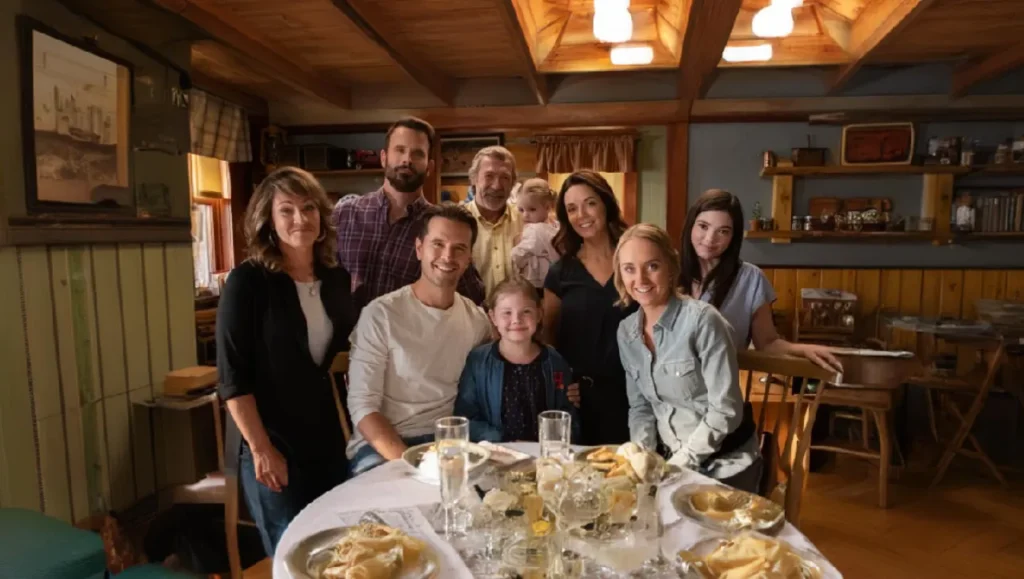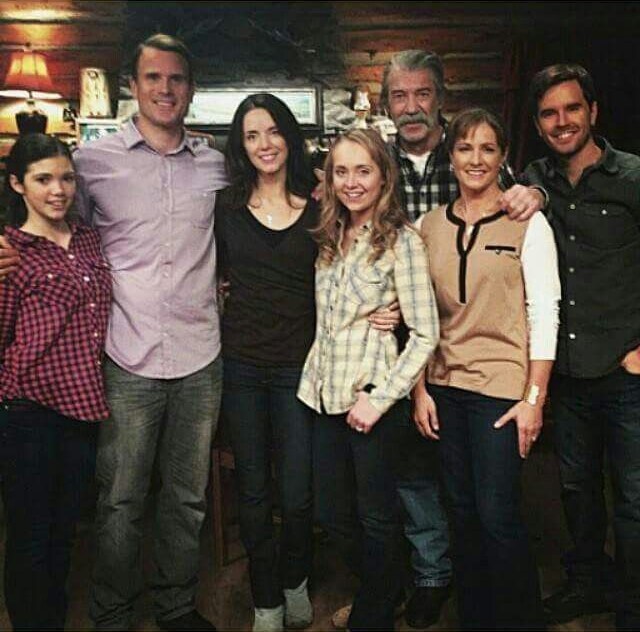Multigenerational Living: Heartland's Secrets to Successful Family Storytelling

We’ve watched the Fleming family grow for more than 13 seasons. But Heartland didn’t just tell a story about a ranch—it built a home that mirrored something quietly powerful: three generations (sometimes four) living together, sharing meals, chores, opinions, and love.
Before the phrase “multigenerational living” gained traction in headlines and housing surveys, Heartland was modeling it on screen.
Now, as more families in real life return to shared households out of financial or cultural necessity, the world is starting to catch up with what Heartland has been showing all along: that home isn’t just a place—it’s a layered, complicated, beautiful web of generations learning how to live together.
Multigen Living Is On the Rise—And Heartland Was Ahead of the Curve
According to Stats Canada, multigenerational households are the fastest-growing household type in the country, with 2.2 million people living in homes that include at least three generations under one roof.
In many cultures, this has always been the norm. But in the Western world, industrialization pulled families apart—sometimes literally. Now, as affordability tightens and families reassess what matters, living with parents, grandparents, children, and even great-grandchildren is making a comeback.
Heartland has long reflected this structure—years before it became a statistical trend.
How the Writers Built a Family That Feels Real
We spoke with Heartland’s writing trio—Heather Conkie, Mark Haroun, and Ken Craw—about the art of writing a multi-season, multigenerational family drama that still connects with viewers from ages 2 to 92.
Where do you draw inspiration for Heartland’s family dynamics?
Heather Conkie:
“We take so much from our characters themselves. Watching them grow up—Amy was just 15 when the series started—has been a gift. It allows us to keep their development honest. And our audience is multigenerational too, which is rare.”
Mark Haroun:
“A lot of it comes from asking, ‘What if?’ What if Amy’s dad has to move back into a home he shares with his ex-father-in-law? We find tension and comedy in what feels real.”
Ken Craw:
“Honestly? We steal from our own lives. We’ve all had those family moments—awkward, hilarious, difficult. Writing Heartland is like constantly doing story research just by being part of a family.”
Writing Real People in Shared Spaces
How much do personal stories shape each episode?
Conkie:
“Constantly. Every time we plan a season, we end up sharing stories—funny, tragic, totally mundane. And a lot of those wind up in the scripts. My family knows to be careful what they say around me.”
Haroun:
“Family dynamics drive everything. It’s always about putting the right characters in the room together—and seeing what sparks.”
Craw:
“We write from each character’s point of view. Their age, beliefs, past experiences—they shape how they’ll react. That’s where the depth comes from.”
Multigenerational Storytelling Isn’t Easy—And That’s the Point
What’s the challenge of tying so many generations into a single story arc?
Conkie:
“It’s harder than people think. Each character has to respond to the same event from their unique perspective. Their histories, their goals—it all colors the story. And sometimes, they completely disagree. That’s where the drama lives.”
Haroun:
“We’re in our 13th season—we can’t just recycle the same beats. We have to keep peeling back who these people are, and what still surprises them.”
Craw:
“You have to stay curious about people. Why do some values stick across generations and others shift? Writing this show is like a long, evolving conversation with your own family history.”
The Loft Is Full—Now What?
In Season 13, Heartland explored the stress and comedy of space—or lack of it.
Amy and Ty are fostering Luke. The loft is crowded. Tim thinks they should move into the main house—because he wants their loft for himself. Meanwhile, Georgie’s back from Europe, eyeing that same loft as her return-to-independence pad.
Everyone wants something. No one wants to budge. Sound familiar?
Conkie:
“That season was fun because we leaned into the chaos. We didn’t need outside research—just a deep understanding of how each character would react to this new setup.”
Haroun:
“We always research specific topics, but when it comes to character interactions, the history we’ve built tells us everything.”
Craw:
“Even though I haven’t lived in a multigen home, I imagine what it would be like if I shoved my whole extended family under one roof. That tension is real—and sometimes necessary.”
Have Family Values Changed in Multigen Homes?
Conkie:
“One of the best things we hear from fans is that Heartland brings their whole family together. Some even recreate the Sunday night family dinners from the show. That’s the kind of feedback that really stays with us.”
Haroun:
“There’s something beautiful about younger and older generations sharing space. It fosters empathy and connection. And I think there’s a growing respect for elders now—especially in how we write characters like Jack.”
Craw:
“Multigen homes offer mentorship, purpose, and perspective—especially for kids. It’s a chance to learn from people who aren’t just your parents. And for older generations, it’s a way to stay connected and purposeful.”

Why It Matters More Than Ever
Heartland may be fictional, but the truth it tells about families—messy, loving, noisy, complicated—is as real as it gets.
In a world that often feels disconnected, the show quietly reminds us: sometimes the most radical thing a family can do is simply sit around the same table.
